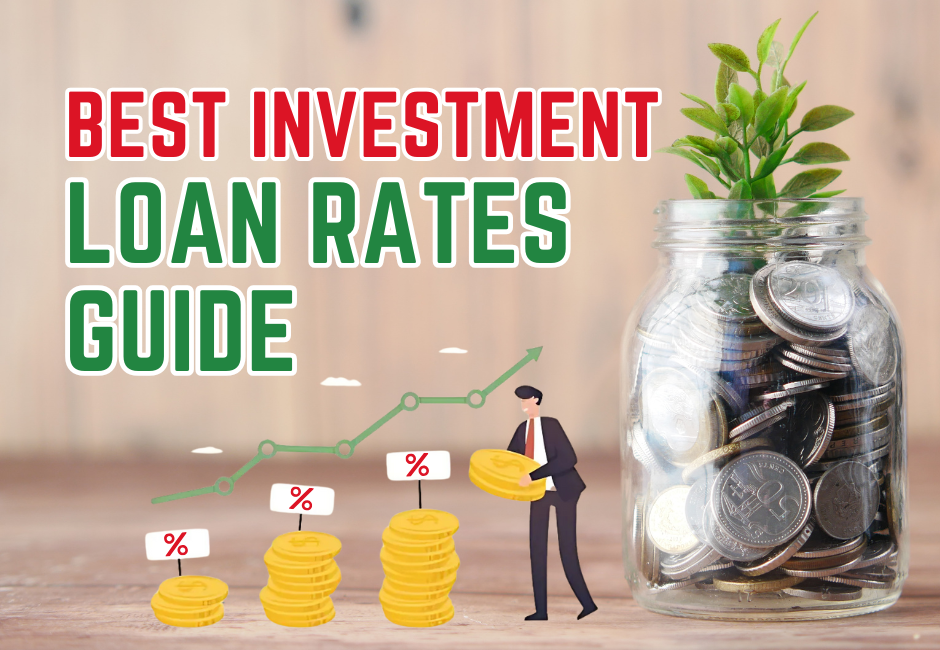
Investment Property Loans: How to Secure the Best Rates for Investors
Investing in property remains one of the most reliable ways to build long-term wealth, but the right home loan is critical to maximising profitability. The cost of finance has a direct impact on your investment returns, and a high-interest loan can quickly erode cash flow.
Unlike owner-occupier loans, investment property loans generally carry higher interest rates, stricter lending requirements, and additional conditions. However, smart investors can still secure competitive rates by understanding how lenders assess risk, comparing loan products, and negotiating favourable terms.
This guide explains how to compare investment property loans, secure the most competitive rates, and structure your borrowing for long-term financial success.
Why Investment Loans Have Higher Interest Rates
Lenders price investment property loans differently because they see them as higher risk compared to owner-occupier loans. Some of the key reasons include:
- Repayment risk: Rental income can fluctuate due to market conditions or vacancies, affecting the borrower’s ability to meet repayments.
- Multiple loans: Many investors hold several mortgages, increasing their total borrowing exposure.
- Interest-only payments: Investors often choose interest-only loans, which means the principal is not reduced over time.
As a result, lenders typically increase rates to cover this additional risk. However, that doesn’t mean investors are locked into paying more — with the right strategies, they can secure better deals.
How to Secure the Best Investment Loan Rates
1. Improve Your Loan-to-Value Ratio (LVR)
The Loan-to-Value Ratio (LVR) is a key factor in determining the interest rate offered. It measures the percentage of the property value you are borrowing.
- 80% LVR (20% deposit): More competitive rates, no Lenders Mortgage Insurance (LMI) required.
- 90% LVR (10% deposit): Higher rates, LMI applies, adding to overall borrowing costs.
Reducing your LVR by saving a larger deposit or using equity from another property can significantly improve your negotiating position with lenders.
2. Compare Fixed vs Variable Investment Loans
The choice between a fixed or variable rate loan will depend on your investment strategy.
- Fixed-Rate Loans:
Provide rate stability for a set period, typically 1 to 5 years. Ideal for cash flow certainty, but come with limited flexibility and potential break fees if refinancing early. - Variable-Rate Loans:
Offer flexibility, with rates that move up or down based on market conditions. Allow extra repayments and easier refinancing but come with the risk of rising rates. - Split Loans:
Combine fixed and variable components, balancing stability and flexibility.
3. Select the Right Repayment Structure
- Interest-Only Loans:
Lower monthly repayments and tax-deductible interest, but the principal remains unchanged. Often comes with slightly higher rates. - Principal & Interest Loans:
Reduce both the loan balance and interest over time, building equity faster. Typically attract lower rates than interest-only options.
Many investors begin with an interest-only period to maximise cash flow, then transition to principal and interest to strengthen their equity position.
Key Loan Features That Benefit Investors
Beyond rates, certain loan features can improve financial flexibility and reduce long-term costs.
- Offset Accounts:
Reduce interest charged by offsetting savings against your loan balance. - Redraw Facilities:
Allow access to extra repayments if needed, helping to manage unexpected expenses. - Loan Portability:
Enable you to transfer your loan to another property without refinancing, saving on fees.
How to Compare and Secure the Best Investment Loan
Compare Multiple Lenders
- Look at major banks, credit unions, and non-bank lenders.
- Focus on comparison rates, which combine the interest rate and standard fees.
- Check for promotional offers and discounts.
Negotiate with Lenders
Lenders often provide better deals to borrowers who:
- Have a strong credit history.
- Provide a lower LVR (larger deposit).
- Own multiple properties and can negotiate a portfolio rate.
Consider Refinancing
Refinancing can help you:
- Secure a lower interest rate.
- Access better loan features.
- Release equity to fund additional investments.
Before refinancing, factor in any exit fees or break costs to ensure the savings outweigh the expenses.
Smart Loan Structuring for Long-Term Success
Use Equity to Grow Your Portfolio
You can borrow against equity in existing properties to finance new purchases.
For example, a $700,000 property with a $350,000 loan provides $350,000 in equity. Subject to lender criteria, you may be able to leverage this equity to expand your portfolio.
Avoid Cross-Collateralisation
Avoid linking multiple properties under one loan. While it simplifies administration, it can limit flexibility and increase risk if you need to sell a property or restructure loans.
Explore Debt Recycling
Debt recycling allows you to convert personal debt into tax-deductible investment debt, improving cash flow and maximising tax benefits.
Common Mistakes to Avoid
- Focusing solely on rates and ignoring fees or loan features.
- Choosing an unsuitable repayment structure that undermines cash flow.
- Overleveraging without factoring in the risk of rising rates.
- Overlooking lender policies, as some banks have tighter restrictions on investment loans.
Steps to Securing the Best Investment Loan
- Compare multiple lenders and negotiate for lower rates.
- Evaluate important features like offset accounts and redraw facilities.
- Select the right repayment strategy to match your investment goals.
- Use equity wisely to grow your portfolio.
- Regularly review your loans and refinance when better opportunities arise.
By carefully selecting and structuring your investment loan, you can reduce borrowing costs, enhance cash flow, and strengthen the long-term profitability of your property portfolio.




